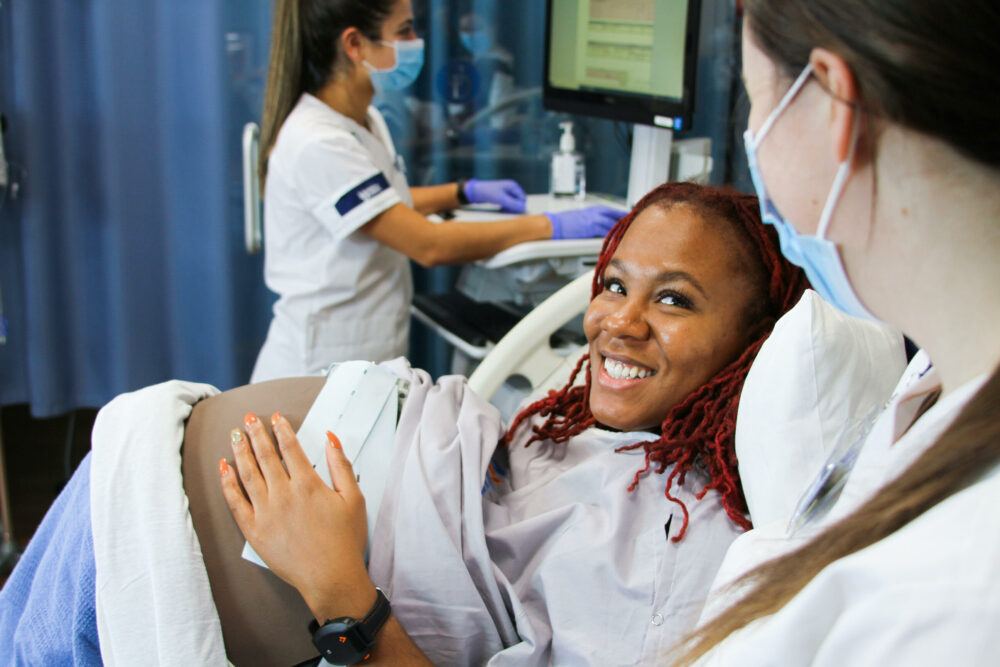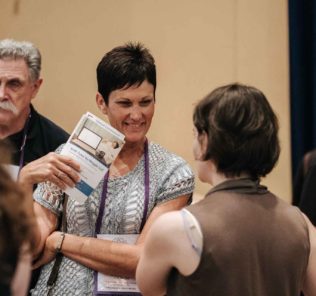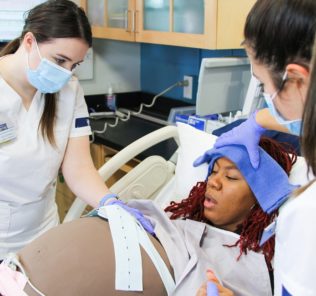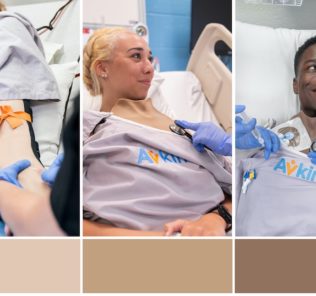Benefits of Utilizing Wearable Simulator Technology Across Medical Education
Chapter 2.5 of Defining Excellence in Simulation Programs describes wearable simulators as products “designed with interactive technology and realistic anatomy and physiology to replicate associated patient care.” Similar to the game of Operation, sensors embedded into the wearable product send haptic signals to the standardized patient, allowing them to provide real-time, authentic patient reactions throughout the learning experience. This HealthySimulation.com article shares the benefits of utilizing wearable simulator technology and shares examples of these products developed by healthcare simulation company, Avkin.
Across clinical simulation, there has been significant momentum to replace outdated manikins with standardized patients (SPs). This is because SPs have been identified as a superior learning modality in healthcare simulation. Historically, a critical limitation of SP methodology is that it cannot replicate abnormal physical findings or complex patient presentations. Wearable simulators address these limitations and now provide the highest fidelity simulation experience for healthcare learners.
Today, experts are predicting that the industry is moving into a post-plastic era. Devon Berry, Ph.D., MBA shared that, “In simulation, there was a time for using manikins, it was what we had when we started, but I see the entire simulation world moving into a post-plastic era. We have better resources and technology than we did in the early 2000s and now we can use Avkin’s wearable simulators with live people which outweighs the current manikin technology.”
Sponsored Content:
SP Design and Integration
Avkin is the leader in wearable simulators. Each Avkin wearable simulator is designed with the safety and comfort of the SP in mind. The products have the necessary anatomic landmarks and associated physiology to allow a perfectly healthy SP to become a “patient” with the altered physiology required to challenge the learners. As the embedded technology provides inconspicuous haptic signals to the SP, they can authentically respond verbally and non-verbally, developing learners’ communication skills.
Learners at Oakland University have raved about their ability to now communicate with a live person and read nonverbal cues. Oakland University nursing learner, Abigail Kawlius, explains that, “With a real person I can now interpret their facial expressions just like I would in real life. It makes a big difference than a manikin that just lays in the bed and talks with a flat voice.”
Further, wearable simulators elevate the integration of SPs in both formative and summative healthcare simulation experiences. This allows learners to really practice their assessment skills and authentically demonstrate their critical thinking proficiencies in a safe, controlled setting. Wearable simulators remove the traditional limitations of SP methodology and maximize simulation learning.
Sponsored Content:
Though wearable simulators are not yet defined in INACSL’s Healthcare Simulation Dictionary, the simulator worn by a trained SP is considered a form of hybrid simulation. The dictionary defines hybrid simulation as “the union of two or more modalities of simulation to provide a more realistic experience.”
The founder and CEO of Avkin, Amy Cowperthwait, was tired of hauling manikins from one room to another and invented Avtrach, Avkin’s first wearable simulator, which was released at IMSH in 2014. Avkin’s most recent release Avbirth generated a lot of buzz at INACSL’s conference in 2022. These wearable simulators are truly something that educators and learners will want to see in action.
Upcoming Avkin HealthySimulation.com Webinar: “Is Simulation Moving Into a Post Plastic Era with Wearable Simulators?” | Oct 18th, 12PM Pacific, UTC-7
Avkin Product Use Example
A non-pregnant person of childbearing age is recruited and trained to be an SP. Though not pregnant in real life, they can wear the Avbirth, a wearable childbirth simulator, and Avband, a smartwatch look-alike that serves as a three-way communication device between the product, SP, and facilitator. The Avband sends cues to the SP based on care being provided, so they can react in real-time.
The healthcare simulation begins with the patient in the throes of labor. The SP knows the appropriate time to respond to the contractions through haptic vibrations emitted from the Avband. Throughout the clinical simulation, the learners are coaching the laboring mother, responding to their questions, assisting them in repositioning, observing the patterns on the fetal heart monitor, and learning to communicate with the patient and their team. The Avbirth can simulate non-complicated and complicated births and allows SPs to birth in a multitude of positions.
Importance of Increased Realism
A common pain point for simulationists is for learners to say, “If it were a real person, I would have said/done [that].” This comment deflates and negates the purpose of medical simulation. The authenticity and realism of wearable simulators so closely mimic clinical care that learners are no longer forced to “suspend disbelief” as in manikin simulation because the patient and their reactions are authentic from the beginning to the end of the simulation.
Often the term high-fidelity simulation is associated with the technology in manikins, but in reality, a high-fidelity simulation is about how lifelike a simulation feels to the learner. Another distinct benefit to this type of simulation modality is that the learners will have an opportunity to receive feedback and insight from the SP during the debriefing process. This benefit is huge as the modality allows them to gain insight into how they are perceived as healthcare professionals, understand the development of therapeutic relationships, and develop confidence in their communication skills which is desperately needed in Next-Gen education.
Avkin’s Latest Package Offering: The Complete Solution
To address the pain points simulationists face in maintaining fidelity in simulation, Avkin has released the company’s latest package offering, The Elite Simulation Package, pairing Avkin’s educational services with high-fidelity wearables simulators. No longer are learners and educators limited to using manikins to replicate humans; they can now bring their healthcare simulations to life with real people!
The package includes Avkin’s entire product line of high-fidelity wearable simulators and the company’s new consulting service, AvMentor. A user’s designated CHSE-certified AvMentor will be with them for the next twelve months, helping them build and integrate live people into their simulation center.
Avkin’s team of simulation experts understands each individual’s day-to-day struggles in the simulation lab and is eager to meet the needs of their faculty to increase the usage of SPs in their program and improve fidelity for their learners. Additionally, this package offer is the only opportunity to receive a discount on Avbirth, the most authentic, wearable birthing simulation experience in the world.
No matter what a simulationist’s field of expertise is, Avkin has the complete solution for their simulation needs. If they are interested in learning more about Avbirth, Avband, or providing their learners with an elite simulation experience, book a meeting with an Avkin team member here.
More About Avkin
Avkin is a manufacturer of wearable devices for use in healthcare simulations and is a consultant for standardized patient programs. Founded by a nurse educator, Avkin provides a simulation solution that combines the best of high-fidelity mannequins and the realism of standardized patients for the most authentic healthcare simulation experience possible. The company believes that the key to success in patient-centered care is practitioner training through realistic healthcare simulations and that human interaction is irreplaceable in clinical education.
Rooted in the Latin words, “Akin” and “Vera,” Avkin is the combination of the two. With Akin meaning ‘of similar character,’ and vera meaning ‘truth,’ our goal has always been to create the best quality products that allow for education to be ‘of similar character’ and ‘true’ to what the learners will experience in real life.
Learn More About Avkin Wearable Simulators
Today’s article was guest authored by Amy Cowperthwait CEO, RN, MSN, CNS, CHSE-A , Makaiyla, Founder and CEO, Marketing Associate at Avkin, Inc..
Have a story to share with the global healthcare simulation community? Submit your simulation news and resources here!
Sponsored Content:

















